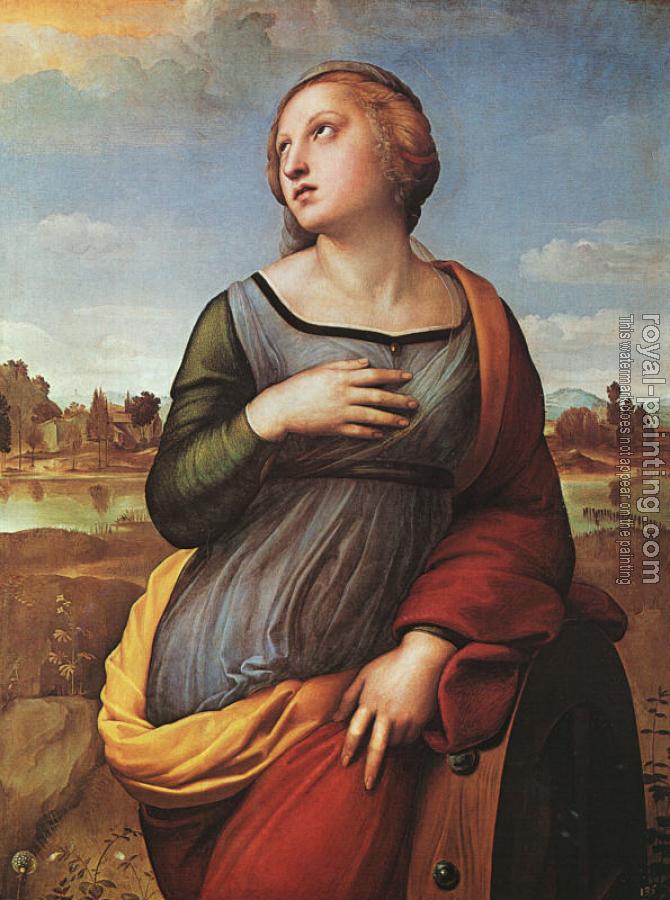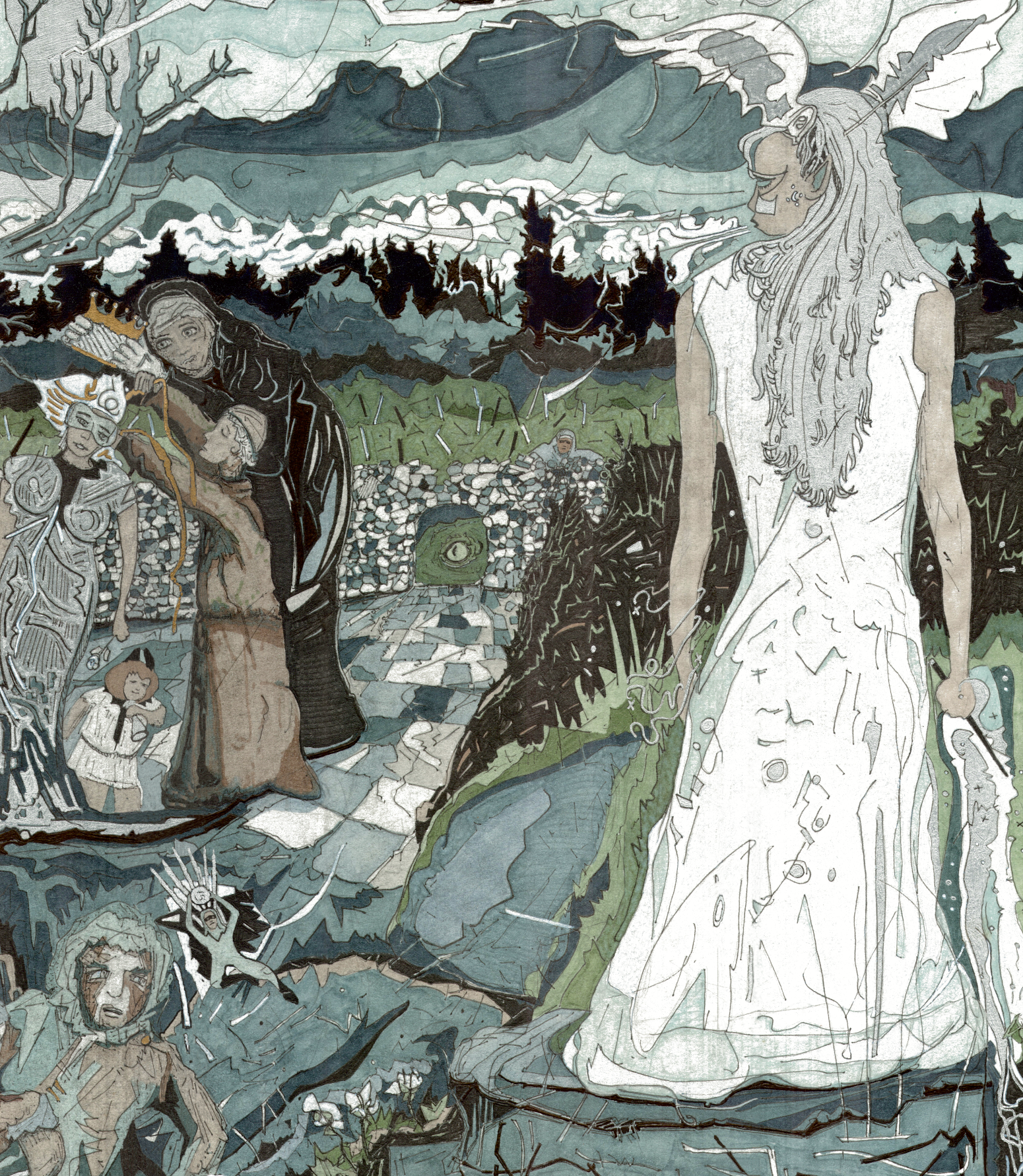Innocent Belief, The Renaissance & Spring 2024 Releases
Good day, friends,
I am delighted to be ready to send this quarter's publication and new release notification. Over the past few months I have found myself involved with more ambitions works, including delving deeper into the ink-on-paper creations. These pieces represent a departure from the loose, semi-abstract, expressionist style of oil paintings I have been producing. They are detail-dependent in application, which inevitably impacts the resulting story line narrative. This difference in technique and complexity requires more attention to properly create, and to evaluate afterward. When I am reflecting on a new completed work I am both considering the ever fascinating phenomenon of the gignere within the creative process, and also the humanistic narrative that it portrays. This process of intellectual discovery and interpretation has become as fundamental to me as an artist as the hands-on part of the process, and in some manner they are one-in-the same.
My peripheral supporting interests remain situated in the study of early Western civilization, and what started as a deep dive into the Renaissance has since led me further back to the early Medieval period and forward to the mid-Eighteenth Century. After considering why I may be so artistically interested in these earlier cultures in a way that eclipses an equivalent interest in my own contemporary one, I've realized it is because of the lack of imaginative 'belief' that has become a hallmark of post-Enlightenment society. I italicized 'belief' because I don't necessarily find that all belief has vanished. Conversely, in many ways, it has increased, however the beliefs of today lack creative ‘charm’ and often end up being nothing more than expressions of temporary societal whims or a short sighted ideology. Indeed, what I am seeking out in past eras, and from only there do I find it, is their imaginative beliefs, still innocent enough to celebrate themselves unashamed. Over the years, I've discovered that this manner of believing is not only helpful to, but ultimately essential for deeper art to blossom. This belief category can be considered a reservoir for all manner of creative impulses that are active, playful, and largely unorganized. Most importantly, this well of inspiration is sub-egoic and out of reach of judgment and interpretation, at least until elevated into that realm. I would like to suggest that this specific belief category has not only diminished in its capacity during modern times, but has been largely deprived of an outlet for healthy expression. This innocent form of inspired motivation is the realm of a healthy childhood, the story that unfolds during imaginative play during which time the participants become an actual part of the fanciful story.1 Let us not assume that its value suddenly becomes irrelevant with age or evolution of thought though, as it then becomes very easy to dismiss it offhandedly as nonsense; but far from it being irrelevant, dismissing it is only done at the expense of something far more important: meaning.
If we look back at the history of civilization, we must remember that the majority of humanity lived without the written word, formalized societal laws, a scientific perspective, or the modern notion of dividing time between work and leisure. Their experience with the world was more contiguous, and understood through direct experience with nature and more loosely arranged cultural norms. This open-ended belief structure allowed for a more creative way of perceiving reality. These beliefs, however misguided (or not), were immediately translated into day-to-day living with an underlying narrative as to its purpose. It is in this mode of 'believing' that I am seeking to engage in with my art.

For the sake of keeping this writing on point, I would like to refocus the time period of discussion back to the High Renaissance, approximately from 1490 – 1530. I gravitate to this period because it represents an inflection point where the structure of civilization and the individual’s belief laden psyche meet with blossoming results unlike any other time. During this historical time of relative stability there existed a place for the imagination of the individual to realize itself in artistic expression with enough support, acceptance, prevalence and durability to give us something to refer to on a large scale. It was a period where architecture aligned with nature, where competing monastic religions intermingled with pagan and polytheist beliefs and myths, and where civilizational expansion campaigns blended cultures and ways of thought from across continents. The High Renaissance in Europe was characterized by a flourishing of artistic and intellectual achievements. Here are three notable examples of individuals from different artistic disciplines who exemplify the spirit of creativity found in an innocent belief:
Painter: Raphael
Raphael, a contemporary of Leonardo da Vinci and Michelangelo, was renowned for his graceful and harmonious compositions. One of his most famous works is "The School of Athens," a fresco located in the Vatican depicting a gathering of great philosophers and thinkers from antiquity. Raphael's paintings are characterized by their idealized figures, balanced compositions, and serene beauty, reflecting the ideals of the High Renaissance.
Poet: Petrarch
Francesco Petrarca, commonly known as Petrarch, was an Italian poet and scholar often referred to as the "Father of Humanism." His sonnets and lyric poetry played a significant role in the development of Italian literature and Renaissance humanism. Petrarch's works, including his famous collection of sonnets addressed to his beloved Laura, explore themes of love, beauty, and the fleeting nature of life, embodying the spirit of intellectual and emotional exploration characteristic of the Renaissance.
Musical Composer: Giovanni Pierluigi da PalestrinaPalestrina was a prominent composer of sacred music during the High Renaissance. His compositions exemplify the polyphonic style characteristic of Renaissance music, characterized by intricate vocal counterpoint and expressive harmonies. One of his most famous works is the motet "Sicut cervus," a sublime example of Renaissance choral music that showcases Palestrina's mastery of polyphony and expressive depth.
These individuals, through their respective artistic mediums, epitomize the spirit of creativity, innovation, innocent belief, and intellectual exploration that defined the European High Renaissance.
As I reflect on my own artistic journey and delve into the myriad examples of creativity from the past, I've arrived at a profound realization; As artists, when we liberate ourselves from the constraints of judgment and preconceived notions, and instead embrace the boundless realm of possibility, we unlock the potential to create art that is truly novel, unique, and captivating. This means embracing the belief that anything is possible, and that our visions can manifest into reality without limitations. However, it also means acknowledging our capacity to evaluate 'reality' through various lenses, disciplines, and modes of thought. By embracing this duality, we not only tap into the limitless wellspring of creativity within us but also engage in a rich dialogue between imagination and rationality, ultimately enriching our artistic endeavors and expanding the horizons of human expression.
I am now pleased to present to you my Spring 2024 new releases and hope that you find at least a hint of ‘innocent belief’ reflected herein:
New releases in the 'A Heavy Hand' Collection: ‘The One Sword of Itō Ittōsai’ – Oil on Wood Panel, ‘Grand are the Memories’ – Oil on Canvas Panel, ‘Vicissitude’ – Oil on Canvas Panel

‘The One Sword of Itō Ittōsai’ – Oil on Wood Panel
New in the "Magical Paper and Ink' Collection: ‘The Euphonious Crowning of Lady K’ – Ink on Paper, ‘The Euphonious Crowning of Lady K’ – Poster and Print on Paper, ‘In Oubaitori's Embrace’ – Mixed Media Water Color on Paper, ‘Garden Party’– Ink on Paper, ‘Selfie Immolation (Field Notes From An Apocalypse) – Ink on Paper, ‘Diluvian Tides and Springtime Rhymes’ – Ink on Paper and Limited Edition Print on Paper, ‘Vae Victis (Woe to the conquered)’ – Ink on Paper, ‘Imp Proper Behavior’ – Limited Edition Print on Paper

‘The Euphonious Crowning of Lady K’ – Ink on Paper
New releases in the 'Stuck on You' Collection: ‘Vae Victis (Woe to the conquered)’,v.1.0 – Gloss Vinyl Sticker

I do thank you for your time and continued support. Feel free to drop me a line should you wish to share your thoughts or to discuss anything in more detail.
Sincerely,
Painter Loki
Footnotes:
1. For a fascinating read on the aspect of play in civilization, see 'Homo Ludens' by Dutch historian and cultural theorist Johan Huizinga.

